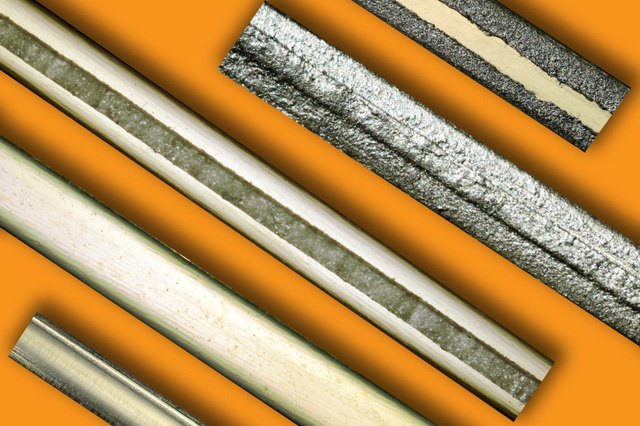The MIT have created artificial muscle fibers of nylon
Artificial muscles - materials that can shrink and contract like muscle fibers. They can be used in many fields, from robotics components to the automotive and aviation industries. Researchers at the Massachusetts Institute of Technology said that developed a very simple and cheap system to create these "muscles".
A key component of that MIT scientists made fiber artificial muscles - cheap and widespread fiber nylon. A new approach to the use of this material is to form and heating the fibers in a certain way.
Previously, researchers have developed the principle of the use of swirling spirals of nylon yarns to mimic progressive muscle performance. They showed that in particular the size and weight of such devices to expand and contract, store and release more energy than the natural muscle. But repeated bending movements of the fingers and human limbs - a difficult task. As MIT researchers claim to have nobody has been able to solve this problem simply and cheaply.
There are materials which can be used for production of bending movements in biomedical devices or tactile displays. But most of these materials "exotic" and expensive, they are difficult to produce. For example, a thread of carbon nanotubes - a durable material that can withstand more than one million cycles of compression, but still too expensive for widespread use. Alloys with shape memory effect provides strong tension, but kept only 1,000 cycles.
The new system uses cheap materials and simple manufacturing process. Nylon can withstand a sufficient number of cycles due to the method of formation of nylon fibers. Some materials of the polymeric fibers, including nylon, have the unusual property that when heated they are reduced in length, but are expanding in diameter. Some scholars have used this feature to create a linear drive device. But to make the linear reciprocating motion in curves, required mechanical devices like block or the winding drum. This adds complexity and increases costs. MIT team was going to be used directly to power motion without additional mechanical components.
In linear actuators made of polymeric materials, there is one significant drawback: in order to cause a reduction in the material to be cooled. The cooling rate may be a limiting factor. However, scientists realized that this deficiency can be an advantage. Selective heating of one side of the fiber causes it to shrink faster than the heat comes to the opposite side. Thus the yarn can deviate sideways. As the PhD Seyed Mirvakili, lead author of the study, it was necessary to achieve a combination of two properties: a high voltage (tension reduction) and low thermal conductivity.
To force the system to work effectively as an artificial muscle fiber section must be carefully handled. To change the cross-section with a round to rectangular or square, the team how to "flatten" them. The researchers then heated one side, forcing the fiber to bend. Changing the direction of heat resulted in fiber that has executed more complex movements. In laboratory tests, the team used this method of heating to cause the fibers to perform a circular motion, and "eight". According to scientists, the fibers can move and more complex trajectories.
The heat source suitable electric resistance heater, chemical reaction or a laser beam which is emitted by a thread. In some experiments, researchers have applied to the fibers and special conductive ink kept in one place using binder resins. Energized only heated portion of the fiber, coated with paint. Heated from one side, the fiber may deviate to one side. If you heat it with the other, the thread is returned to its original position.
Studies have shown that the material can withstand at least 100 thousand bending cycles and can contract and relax up to 17 times per second. According to Ian Hunter, one of the authors of the study, such fibers are suitable for the production of clothing, which will be reduced in order to adapt to the contours of the human body. Then manufacturers would reduce the dimensional range, increasing comfort and making it easier to fit. From bendable fibers can make shoes that will sit exactly on the leg, and its rigidity and shape of every step will be adjusted.
The system can be used for the production of self-adjusting catheters and other biomedical devices. In the long term, you can create a mechanical system, such as outer panels for cars. Panels of fibers will adjust aerodynamically shaped to adapt to changes in the speed and wind. Or they can be used as an automatic "tracking system" for solar panels. They would use an excess of heat to control the direction toward the sun batteries.
The scientific work is published in the journal Advanced Materials November 23, 2016

This post has been ranked within the top 10 most undervalued posts in the first half of Nov 25. We estimate that this post is undervalued by $10.54 as compared to a scenario in which every voter had an equal say.
See the full rankings and details in The Daily Tribune: Nov 25 - Part I. You can also read about some of our methodology, data analysis and technical details in our initial post.
If you are the author and would prefer not to receive these comments, simply reply "Stop" to this comment.